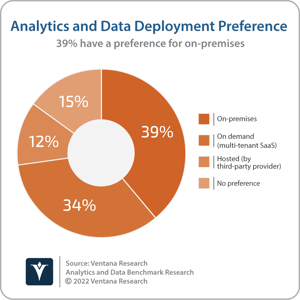The server is a key component of enterprise computing, providing the functional compute resources required to support software applications. Historically, the server was so fundamentally important that it – along with the processor, or processor core – was also a definitional unit by which software was measured, priced and sold. That changed with the advent of cloud-based service delivery and consumption models.
Functionally, servers remain critical to cloud computing, providing the physical or virtual compute resources for software applications. However, in environments where software is consumed as a service without being installed or configured by the user, and resources automatically scale up and down in response to changing requirements, the server is an increasingly abstract concept. Server functionality is still there, executing the code, but the concept of the server as a measurable unit of computing has been substantially diminished. The services by which the user interacts with the software are increasingly serverless, as far as the user is concerned.
Serverless computing was initially associated with function-as-a-service, but has been extended by the launch of serverless databases. There are now examples of serverless databases in all data platform categories, including operational data platforms that are both relational and NoSQL, and analytic data platforms, which are primarily data warehouses, but also serverless query engines with which to analyze data in a data lake. Serverless databases are an increasingly attractive option for supporting the agility required by data-driven organizations. However, serverless is not the best fit for every application or workload, and there are some potential disadvantages that need to be weighed alongside the conceivable benefits when considering the suitability of serverless database offerings.
In a serverless environment, the service provider is responsible for configuring and managing available resources, which, from the user’s perspective, “automagically” scale in response to evolving performance and capacity requirements. As such, serverless databases provide several potential administrative benefits over more traditional database products that users need to install, configure and manage on physical or virtual compute resources. The biggest advantage could be time savings. Since the service provider is responsible for configuring and managing available resources, this reduces the time spent by organizations on capacity planning as well as installing, configuring and managing the infrastructure. I assert that through 2025, 7 in ten organizations will migrate on-premises workloads to cloud data platforms, shifting focus to solving business needs rather than maintaining systems. Serverless computing also removes requirements for the user to manage security, patches and bug fixing as well as the complexity of availability, backup and recovery. This potentially enables organizations to reduce the number of database administrators or focus developers on higher-value differentiating features such as applications and user experience.
Simple, application programing interface-based interaction with serverless database services also has the potential to lower the learning curve for developing new, data-driven-png-1.png?width=300&name=VR_2022_Data_Assertion_9_Square%20(5)-png-1.png) applications that enhance developer productivity. This serverless approach also promises reduced costs. Savings can be realized by decreasing the number of infrastructure and data engineers, or only paying for the resources used by serverless database services while they are operational, rather than idle server time when resources are not required. Instead of budgeting for and configuring maximum capacity requirements, users also have the knowledge that resources expand and contract with consumption as the environment automatically scales up or down in response to changing requirements.
applications that enhance developer productivity. This serverless approach also promises reduced costs. Savings can be realized by decreasing the number of infrastructure and data engineers, or only paying for the resources used by serverless database services while they are operational, rather than idle server time when resources are not required. Instead of budgeting for and configuring maximum capacity requirements, users also have the knowledge that resources expand and contract with consumption as the environment automatically scales up or down in response to changing requirements.
Technically, there are no limitations to the type of workloads that can be run on a serverless database. Practically, however, there are some restraints. If an organization needs control over physical hardware to meet specific performance requirements, then serverless is clearly not an appropriate option. Since serverless databases are delivered as managed services, any workload with requirements for on-premises data processing (such as performance or regulatory needs) are not going to be a good fit. Security requirements may also rule out the use of managed services that are based on multi-tenant environments. More than one-third (39%) of respondents to Ventana Research’s Analytics and Data Benchmark Research prefer to purchase and deploy analytics and data technology on-premises today.
Additionally, long-running workloads may not deliver the advertised benefits in terms of cost-savings compared to ephemeral workloads. Serverless databases are highly suited to development and test environments as well as lightweight applications and workloads with sporadic usage. High-performance workloads may also be considered unsuitable, not least because serverless databases can suffer with “cold start” issues. Spinning down the database when it is not in use is a benefit that needs to be balanced with initial response latency when the database is spun back up. While technically a serverless database may be capable of scaling up and down elastically, organizations should also read contracts carefully to ensure pricing and billing terms provide similar flexibility and are not artificially constrained.
development and test environments as well as lightweight applications and workloads with sporadic usage. High-performance workloads may also be considered unsuitable, not least because serverless databases can suffer with “cold start” issues. Spinning down the database when it is not in use is a benefit that needs to be balanced with initial response latency when the database is spun back up. While technically a serverless database may be capable of scaling up and down elastically, organizations should also read contracts carefully to ensure pricing and billing terms provide similar flexibility and are not artificially constrained.
Other potential challenges include heavy dependence on the provider. Users of managed database services place considerable trust in the vendor to manage security, patches and bug fixing as well as maintain performance and service levels. If that trust turns out to be misplaced, users may be challenged to move elsewhere, since their applications are developed to take advantage of a specific serverless offering which both the user and third-party services providers will likely struggle to replicate.
Serverless databases are an emerging subset of the database software category. Adoption is low but is growing as developer engagement helps overcome entrenched reliance on traditional approaches. I recommend that organizations weigh the potential benefits and challenges of serverless databases for new database initiatives, and experiment with how and when to use serverless databases versus more conventional, self-managed, on-premises deployments and dedicated cloud services.
Regards,
Matt Aslett


-png-1.png?width=300&name=VR_2022_Data_Assertion_9_Square%20(5)-png-1.png) applications that enhance developer productivity. This serverless approach also promises reduced costs. Savings can be realized by decreasing the number of infrastructure and data engineers, or only paying for the resources used by serverless database services while they are operational, rather than idle server time when resources are not required. Instead of budgeting for and configuring maximum capacity requirements, users also have the knowledge that resources expand and contract with consumption as the environment automatically scales up or down in response to changing requirements.
applications that enhance developer productivity. This serverless approach also promises reduced costs. Savings can be realized by decreasing the number of infrastructure and data engineers, or only paying for the resources used by serverless database services while they are operational, rather than idle server time when resources are not required. Instead of budgeting for and configuring maximum capacity requirements, users also have the knowledge that resources expand and contract with consumption as the environment automatically scales up or down in response to changing requirements. development and test environments as well as lightweight applications and workloads with sporadic usage. High-performance workloads may also be considered unsuitable, not least because serverless databases can suffer with “cold start” issues. Spinning down the database when it is not in use is a benefit that needs to be balanced with initial response latency when the database is spun back up. While technically a serverless database may be capable of scaling up and down elastically, organizations should also read contracts carefully to ensure pricing and billing terms provide similar flexibility and are not artificially constrained.
development and test environments as well as lightweight applications and workloads with sporadic usage. High-performance workloads may also be considered unsuitable, not least because serverless databases can suffer with “cold start” issues. Spinning down the database when it is not in use is a benefit that needs to be balanced with initial response latency when the database is spun back up. While technically a serverless database may be capable of scaling up and down elastically, organizations should also read contracts carefully to ensure pricing and billing terms provide similar flexibility and are not artificially constrained.








